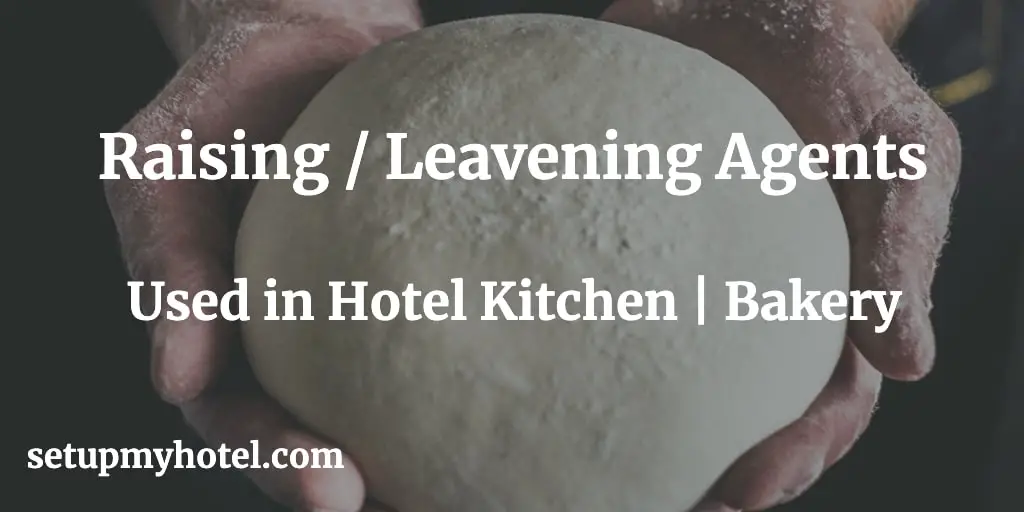Different Raising / Leavening Agent Used in The Hotel Kitchen | Bakery
There are several types of raising agents or leavening agents that are commonly used in hotel kitchens. One popular type is baking powder, which is a mixture of sodium bicarbonate and an acid such as cream of tartar. Another option is baking soda, which is sodium bicarbonate on its own and requires an acid to activate it.
YeastYeast is a�group of microorganisms used in fermenting some foods and leavening bread. Yeast conver... is also a common leavening agent, particularly in bread-making, as it ferments and produces carbon dioxide gas. Other options include eggs, which can add air to a batter or dough, and steam, which can be used to puff up pastries or bread. Chefs and bakers need to choose the right type of raising agent depending on the recipe and desired outcome.
Leavening or raising means to increase the surface area of any dough or batter by creating gas bubbles inside the dough or batter. This also makes a product light in weight.
The expansion of gas bubbles during baking increases the volume of the product and gives a desirable porous structure. Raising agents that are used in the kitchen can be classified into the following categories:
1) Biological (Yeast).
2) Chemical (Baking powder, baking soda, baking ammonia).
3) Mechanical (Beating, whisking, creaming, sieving).
4) Lamination.
5) Natural Leavening Agents.
1.Biological Raising Agent:
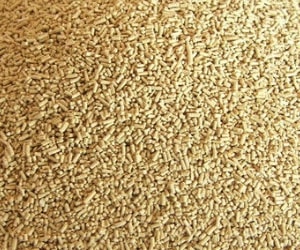
a) Yeast: Yeast is a tiny living fungus and can be of two types 1) Fresh or compressed Yeast and 2) Dry Yeast It thrives on sweetness, warmth, and moisture. As the yeast eats, it excretes carbon dioxide and alcohol. It is this gas which causes a rise in the baked product.
The Alcohol evaporates during the baking process, yet helps in the development of flavor in the bread. And because yeast is a living organism the baker’s main goal is to control the point of death of the yeast. The scientific name of yeast is Saccharomyces Cerevisiae. Yeast is unicellular microscopic fungi and the structure of yeast consists of a) Cell wall b) Protoplasm and c) Vacoale.
Yeast, whether it is compressed or dry is usually stirred into a small amount of warm liquid and allowed to stand for at least five minutes to dissolve.
b) Food: Simple sugar like dextrose or fructose.
c) Suitable climate: 80 to 85 degrees F, at least 70% humidity can give the best result.
d) FermentationFermentation - The interaction of yeast and carbohydrates which develops carbon dioxide gas and alco... activity: The protoplasm of yeast contains the following enzymes:
Invertase: It converts cane sugar or sucrose into a simpler form of sugar which is known as invert sugar, which is a combination of dextrose and fructose.
Maltase: It converts maltose sugar into dextrose which can be directly fermented by yeast.
Zymase: this is the most important fermenting agent that breaks invert sugar and dextrose to carbon dioxide, some amount of pure alcohol, and a very small amount of glycerine, acetic acid, and some amount of lactic acid. It also produces some flavourful aroma which gives a pleasant fermentation flavour.
Protease: It softens down the flour protein, thus giving a better stretchability for the bread (to be specific on gluten) so that it can get a good volume and structure.
e) Storage of yeast: Stored at 45 degrees F. Yeast is killed by heat in a range of 127 degrees to 140 degrees F.
f) The symptoms of damaged or rotten yeast: Buttery consistency, Brownish in color, Crumbly in texture, Very obnoxious smell. If the baker has any doubt about the freshness of the yeast then it should be proofed.
Tip! – Method of proofing yeast:
DissolveDissolve: Separating dry ingredients into particles for complete absorption in liquid. yeast in 1/4 cup of warm water with one teaspoon of sugar and two tablespoons of flour. If the yeast is active it will be spurred on by the sugar and fed by the flour. Within ten minutes the yeast should begin to expand and foam. The proofing of yeast before adding it to other ingredients will save time and expense.
2.Chemical Raising Agent
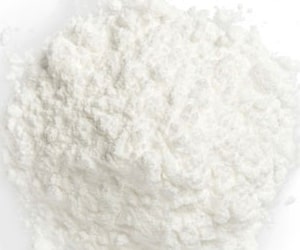
A chemical raising agent is brought about by the production of carbon dioxide in a solution of acid and alkali, in the presence of heat.
A) Baking PowderBaking Powder- A mixture of sodium bicarbonate and one or more acids; generally the cream of tartar ...: It is a leavening agent made up of a mixture of an acid-reacting salt with bicarbonate of soda. We also add some starch to the mixture to keep it in a dried condition and also to act as a separator between sodium bicarbonate and acid reacting salt, until used.
There are three types of baking powder. 1) DoubleA guest room assigned to two people. In beverage operations; a drink prepared with twice the standar... action – baking powder releases 1/3 of its carbon dioxide at room temperature and the rest during baking. 2) Tartrate – baking powder reacts quicker, as soon as the liquid is added, and 3) Phosphate – baking powder is slower and only heat releases its gases.
In the presence of both heat and moisture, the acid-reacting salt reacts with sodium bicarbonate and releases carbon dioxide. A part of the gas is entrapped into the gluten structure or small air cells of a batter which already has developed because of the creaming action of fat, these structures now expand with the production of the gas, and during baking the small part of the gas is absorbed by the media itself. Cream of tartar is a form of refined tartar which is a by-product or precipitation from the grape wine manufacturing process.
B) Baking SodaBaking Soda - Sodium bicarbonate; an alkaline compound that releases carbon dioxide gas when combine...: Baking soda which is chemically known as Sodium bicarbonate acts also acts as a leavening agent when mixed with an acid such as sour cream, sour milk, buttermilk molasses, or citrus juice. The chemical reaction of leavening agent and acid produces gases which make the mixture rise.
C) Ammonium Carbonate: It is also known as baker’s ammonia or hartshorn, which is in white crystalline salt. Since it readily degrades to gaseous ammonia and carbon dioxide upon heating, it is used as a leavening agent and also as a smelling salt. It also produces carbon dioxide in the presence of heat but because of the strong offensive flavour, it is always to be used with very strong flavouring agents.
3.Mechanical Raising Agents
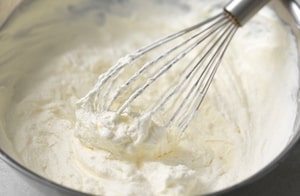
It is the incorporation of air by beating, creaming, whisking, and sieving. Whisking of egg and sugar, creaming of fat and sugar, and sieving of flour are the eg of mechanical raising. All these actions involve physical movement hence known as mechanical raising or leavening.
4. Lamination
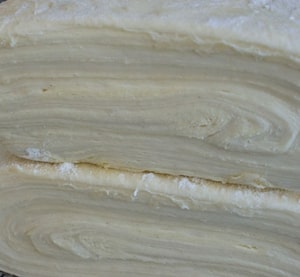
Lamination acts as a raising procedure where the fat and dough are folded and rolled. The moisture incorporated in the fat and in the dough also will vaporize during baking and give it a lift (or raising).
5.Natural Leavening Agents
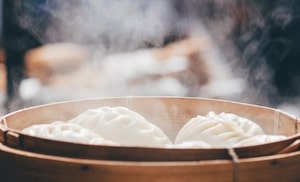
Steam: Steam can be used as a leavening agent for cooking that is done at very high temperatures. The batter must be capable of holding in the steam until it is set. Steam gives the effect of leavening as it expands upon heating. This way of cooking is generally applied in popovers and Yorkshire puddings.
